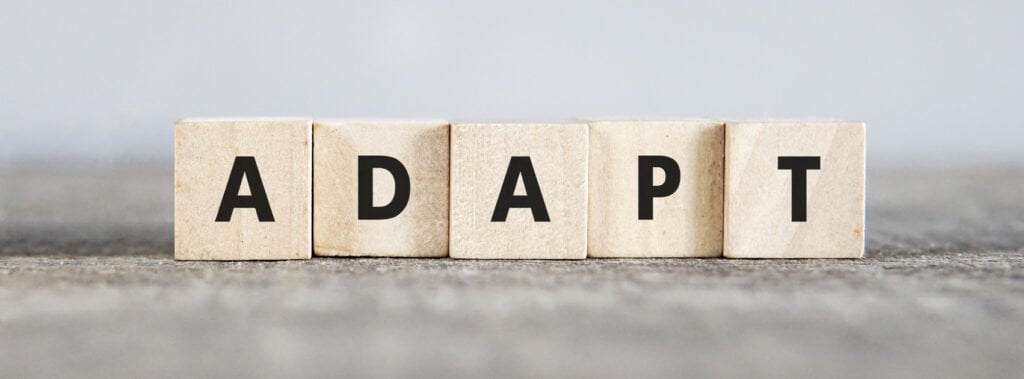Instagram is infamous for making tweaks to its platform without properly warning its community of creators and businesses that rely on the app for their income. And earlier this year, the Meta property did it again. This time the victim was the 4:5 Instagram grid.
In January, Instagram switched user profile grids from their traditional square display, which has been in effect since the app launched in 2010, to a 4:5 portrait display.
Instagram CEO Adam Mosseri apologized for the surprise rollout but justified the change by saying that the 4:5 posts would encourage engagement by occupying more space on users’ screens. However, the change has been limited to Instagram profiles, complicating things for businesses that also post and boost through Facebook.
Nine months in, we have seen little benefit from switching to a 4:5 post size, which means businesses can continue posting in a square format if it matches their broader Meta strategy.
Why the Grid Change Was Really About Reels
The shift to a 4:5 Instagram grid format wasn’t just about aesthetics or user experience; it was part of Instagram’s aggressive push to prioritize video content, particularly Reels. Instagram’s algorithm in 2025 continues to evolve toward a video-first experience, with Reels receiving an average reach rate of 30.81% compared to just 13–14% for static images and carousels.
While Reels dominate organic reach and engagement on the platform, they’re not necessarily king for advertising ROI, especially for small to mid-sized businesses with limited budgets.
The Hidden Cost Problem: Why Reels Aren’t Always Worth It
Here’s what Instagram doesn’t tell you: the cost to produce high-quality Reels can significantly eat into your advertising budget, making them a poor ROI choice for many brands.
Production Costs Are 5–10x Higher
Creating professional video content requires substantially more resources than static images. According to industry data, video ad production typically costs between $2,000 and $50,000, compared to $200 to $5,000 for image ads. Even basic Reel creation can run $200–$800 per video when factoring in scripting, filming, editing, and post-production.
For context, influencers typically charge $400 per Reel versus $300 for a static post, reflecting the additional time and effort required. Some creators report that Reels take 3x longer to produce than static content.
Ad Performance Doesn’t Always Justify the Investment
While Reels generate higher engagement rates for organic content, the advertising story is more complicated. Research shows that video ads have a cost-per-purchase that is 24–47% higher than image ads. Video ads also have higher CPM rates, costing approximately 17% more to display.
For businesses running on modest budgets, static or carousel ads often deliver better cost-efficiency. Image ads typically have a lower cost-per-click ($0.60–$2.00) compared to video ads ($1.50–$3.00).
The Asset Problem: Your Existing Photography Won’t Work
Most companies have invested in professional photography shot specifically for the traditional 1:1 square format that Instagram used for over a decade. These assets were carefully composed to work within square constraints.
To accommodate the new 4:5 format properly, businesses would need to:
- Commission new photography shoots entirely
- Reframe or reshoot existing product images
- Invest in additional editing and reformatting work
This represents another significant cost that many businesses haven’t budgeted for, especially when the existing square-format assets still perform perfectly well in feeds and as ads.
Why the 4:5 Format Is Problematic For Businesses
While the Instagram profile grid now supports taller photos, Meta’s ad platform (which powers both Facebook and Instagram ads) is still designed around classic formats, such as the square post.
This means if you boost a 4:5 image, the boosted post often displays awkwardly on Facebook feeds, with undesired crops or empty borders that reduce the post’s effectiveness and professional appearance.
On the flip side, square images still display well on Instagram’s Home and Discover feeds without any cropping. So, the classic square is still the most versatile post size.
Instagram Users Rarely Look At Profiles Anyway
Another reason why square images are still the safest bet on Instagram: Users on the platform rarely look at profiles to begin with.
Instagram feed posts and stories still account for over 80–90% of total post impressions for the average business or creator, while grid/profile visits represent only about 5–15% of total reach. Some businesses report profile visits accounting for as little as 1–4% of their total views.
This means the vast majority of your audience never sees your profile grid. Their engagement comes directly from content delivered to their feed—whether that’s organic posts or paid ads.
With organic reach continuing to decline (Facebook posts now reach only 1–2% of followers, while Instagram posts reach approximately 3.5%), most users encounter your content either as an ad or through algorithmic recommendations, not by visiting your profile.
How to React to the 4:5 Instagram Grid Change
We recommend businesses continue to use square graphics for posts intended for boosting. This will keep your content looking clean and professional, whether it’s on Instagram or Facebook.
To keep your profile grid looking tidy, center your key text and imagery as close to the middle as possible to minimize cropping. This way, your main content will often show, even in the new taller preview format.
Be Strategic About Video Investment
Rather than jumping on the Reels bandwagon because everyone else is, evaluate whether video production makes sense for your specific budget and goals. Consider:
- Testing a mix of static ads, carousels, and occasional Reels rather than going all-in on video
- Repurposing existing video assets before investing in new production
- Starting with simple, authentic video content rather than highly produced Reels
- Measuring actual ROI (cost per conversion, not just engagement) before scaling video spend
For many businesses, allocating 20–30% of content budget to strategic video while maintaining strong static ad performance delivers better overall results than forcing a complete shift to Reels.
Why Boost Your Posts?
It’s become more difficult lately for brands to make a splash on social media with organic content. This is because social media feeds are increasingly centered around the algorithm, pushing up posts from accounts users don’t follow and pushing down posts from accounts that they do. But you don’t want to just unplug.
Boosting, or putting ad dollars behind your posts, is a way you can actually guarantee a presence in your audience’s feeds. Even $10 can put your posts in front of over a thousand new people.
If you’re interested in social media that gets seen, reach out to us. It’s what we specialize in.

Experienced Marketing Consultant with a demonstrated history of working in the marketing and advertising industry. Skilled in Search Engine Optimization (SEO), Advertising, E-commerce, Strategic Planning, and Marketing Strategy. Strong business development professional graduated from Belmont University.


